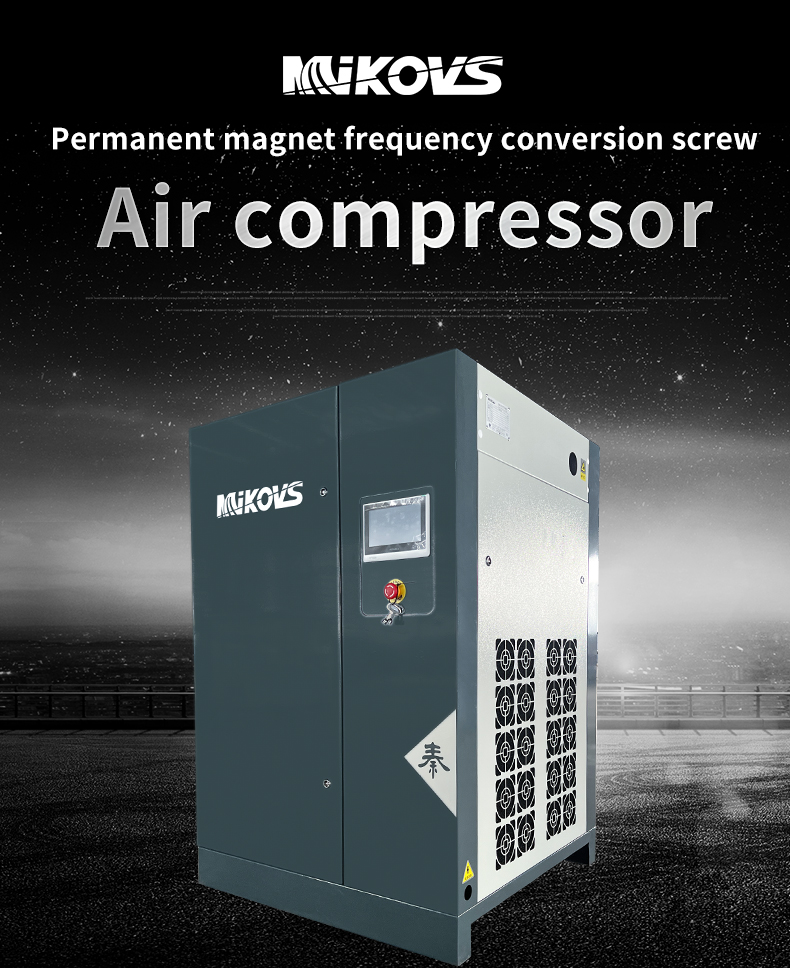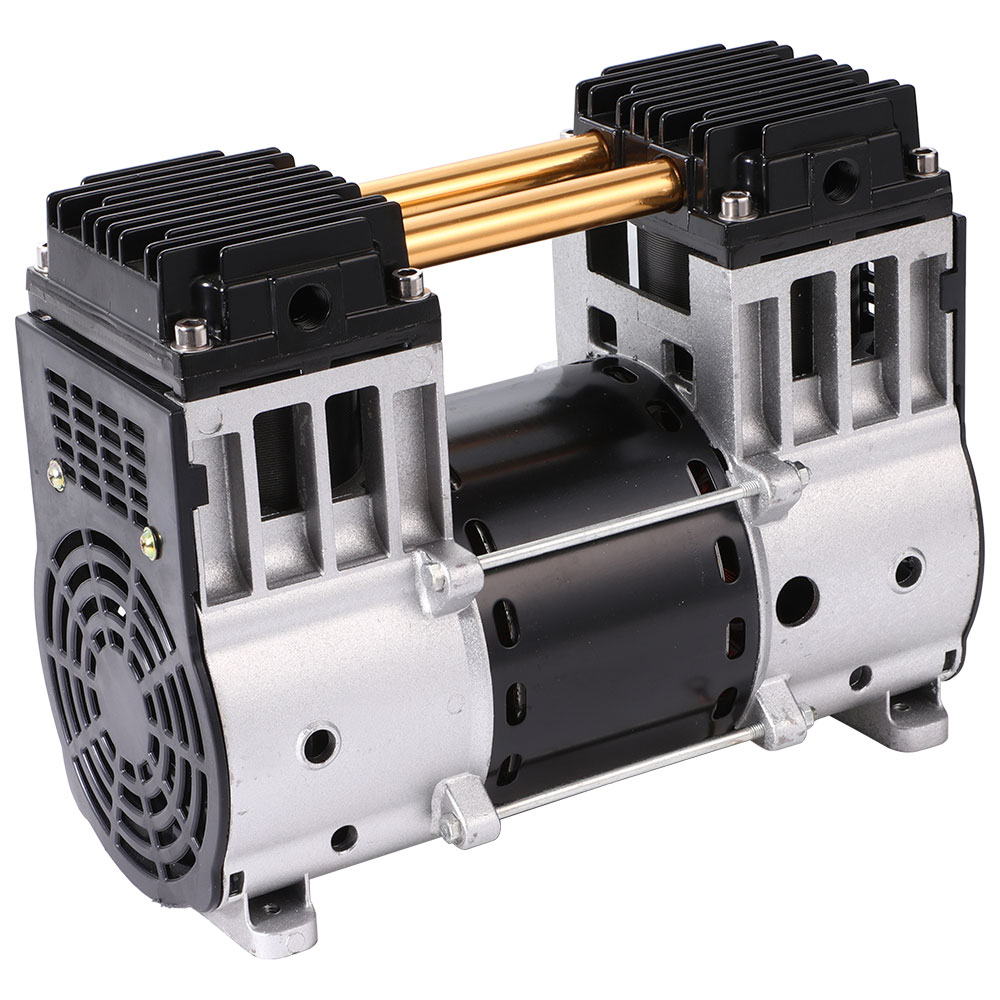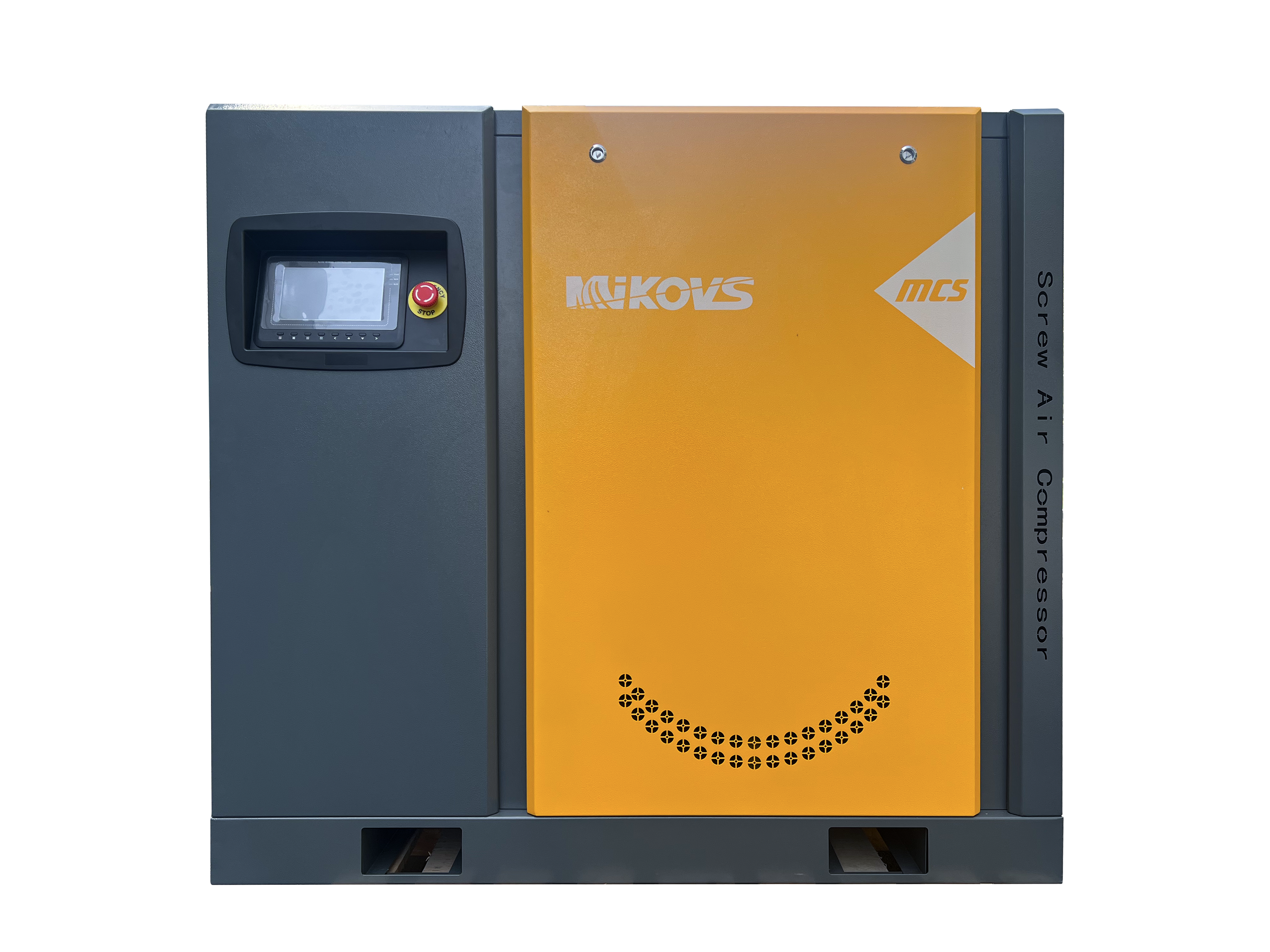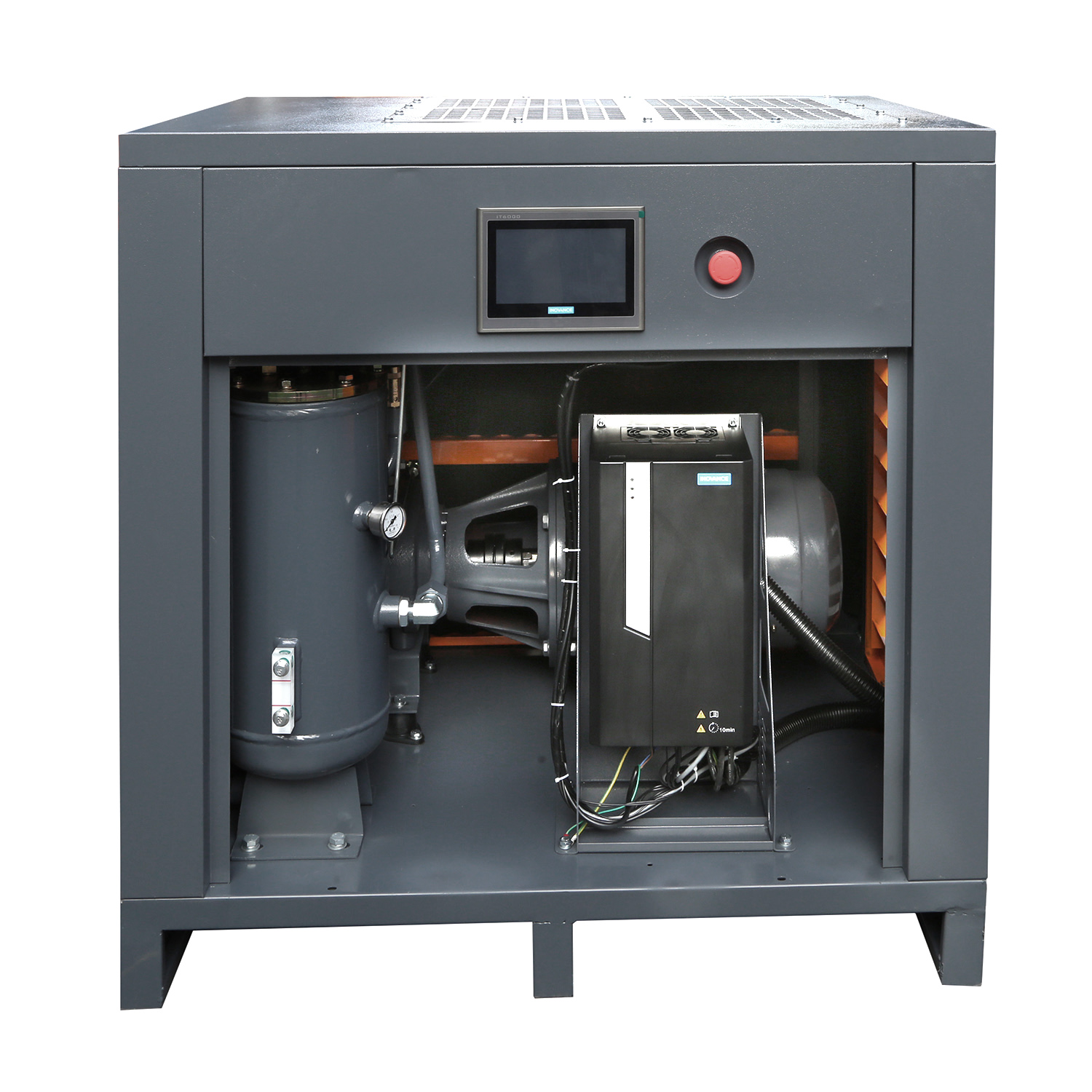The cause of the failure of the rotor outlet temperature is too high
1. The oil level is too low
2. The cooler is blocked
13. The air filter is blocked
14. There is a problem with the rotor
3. There is hot air backflow in the Tuofeng slot 15. The oil cooler is blocked
4. Insufficient cooling air volume
16. The piston of the unloading valve is damaged and stuck. 17. The minimum pressure valve is stuck.
5. The thermostatic valve is stuck
7. The cooling water flow is not smooth (negative pressure) 18 hose leakage and blockage
6. The cooling water inlet temperature is too high
8. The oil cut-off valve is stuck
9. The oil return pipe is blocked
10. The pressure difference of the oil and gas separator is too large
11. The aftercooler is blocked
12. The oil filter is clogged
Causes of Motor Overload Faults
1. F21 overload relay is aging, poor contact, damaged 2. Q15 overload relay is aging, poor connection angle, damaged
3. The normally closed corner of F21 and Q15 relays is disconnected
4. Angle joint failure (aging arcing)
6. The solenoid valve is damaged
8. The oil and gas separator is blocked
10. The minimum pressure valve is stuck
12. The three-phase voltage is too low or unbalanced
13. The cooling fan of the motor is damaged or the heat dissipation is poor
14. The rotor is stuck
16. The motor bearing has no grease drop
18. Poor ground insulation
5. Computer failure (aging)
7. The intake valve cannot be opened
9. The aftercooler is blocked
11. The motor bearing is damaged
15. The conveyer sub-wheel is heavy
17. Three-phase insulation is too low
19. Line aging, terminal burning
What are the common reasons for running oil
The oil level is too high and too much oil has been injected.
12345
Oil return pipe blocked. The installation of the oil return pipe (the distance from the bottom part of the oil separation core) does not meet the requirements and the exhaust pressure is too low when the unit is running
The separator inside the separation barrel is damaged and the unit has oil leakage
Incorrect oil, lots of foam
8. Oil deterioration or overdue use. 9. The oil in the external spinner, if the O-ring of the core tube is not sealed, it will leak oil. 10. If the unit has an oil return check valve, the one-way valve will cause the unit to stop The oil flows back to the oil separator, and it will run out of oil when it is restarted. 11. The oil separator core is damaged and ruptured.
Reasons for high oil content in compressed air of screw air compressors
Oil and gas separator quality
Oil return pipe or oil return check valve blocked
Pressure maintenance valve opening pressure is too low
Four: the use of pressure is too low
Five: the quality of the oil foam
The common pressure maintenance valve is set at greater than or equal to 0.40Mpa to discharge the gas,
It is best to use the original (built-in) oil and gas separator core. Whether the position of the oil return pipe is offset or not depends on the oil return pipe and filter screen or the oil return check valve.
Air compressor pressure maintenance valve flow rate too high can also produce high oil content in the compressed air (cracking pressure is too low), this situation often occurs.
Why should lubricating oil be replaced regularly?
After the lubricating oil is used for a certain period of time, it must be replaced regularly due to the following factors affecting the quality of the oil: 1. Metal shavings rubbed off the friction surface due to wear; 2. Dust and other hard particles brought in by the air: 3. Molding sand that has not been carefully removed from the casting; 4. The paint layer on the machine part is peeled off;
5. The lubricating oil produces moisture during the cooling process and the oil deteriorates: 6. The temperature and other influences of the lubricating oil in the circulating lubrication gradually reduce the lubricating performance of the oil.
The above-mentioned sundries are easy to form abrasive paste analogues in the lubricating oil, pollute the lubricating oil, and accelerate the abrasion of the friction surface of the machine violently. Therefore, if the lubricating oil of the machine gradually deteriorates to the following indicators during use, it should be replaced with new oil: if there is no inspection equipment and cannot be inspected, replace it with new oil every 2000 to 3000 hours. And carefully clean the oil supply equipment and each lubrication point.
What factors will affect the actual displacement of the screw compressor
The theoretical displacement of the screw compressor depends on the inter-tooth volume, the number of teeth and the speed. The inter-tooth volume is determined by the geometric size of the rotor. For compressors, the possible reasons for the actual displacement being less than the theoretical displacement are: 1) Leakage. There is no contact between the rotors and between the rotor and the casing during operation, and a certain gap is maintained, so gas leakage will occur. When the pressure-increased gas leaks to the suction pipe and the sucking groove through the gap, the exhaust volume will be reduced. In order to reduce leakage, sealing teeth are made on the tooth top of the driven rotor, sealing grooves are opened on the tooth root of the driving rotor, and ring-shaped or strip-shaped sealing teeth are also processed on the end face. If these sealing lines are worn, the leakage will increase and the exhaust volume will decrease: 2) Inhalation state. The screw compressor is a volumetric compressor, and the suction volume remains unchanged. When the suction temperature rises, or the suction pipeline resistance is too large to reduce the suction pressure, the density of the gas decreases, and the quality of the gas decreases accordingly. Displacement:
What factors will affect the actual displacement of the screw compressor
3) Cooling effect. The temperature of the gas will increase during the compression process, and the temperature of the rotor and the casing will also increase accordingly. Therefore, during the suction process, the gas will be heated by the rotor and the casing and expand, so the suction volume will be reduced accordingly. Some of the rotors of the screw air compressor are cooled by oil, and the casing is cooled by water. One of the purposes is to reduce its temperature. When the cooling effect is not good, the temperature will rise and the exhaust volume will decrease;
4) Speed. The displacement of the screw compressor is directly proportional to the speed. The speed often changes with the voltage and frequency of the power grid. When the voltage is reduced (for asynchronous motors) or the frequency is reduced, the speed will drop, reducing the gas volume.
The main reason for the high temperature of the screw compressor
1234 The bearing clearance is small; the bearing pad is damaged; the lubricating oil supply pressure is too low; the oil return of the compressor is not smooth;
D.
0
The compressor is in an abnormal working state, the axial thrust is too large (thrust bearing);
6. The efficiency of the lubricating oil heat exchanger decreases, and the oil inlet temperature is high;
If the above reasons exist, whether the temperature measuring platinum thermal resistance is connected normally will determine the temperature displayed by the bearing.
Four reasons why the screw compressor temperature is too high
1. Cooler efficiency is low
2. Lubricating oil aging failure
3. The oil temperature sensor fails
4. Poor coordination of moving parts
Nine, compressor overheating
a. There is no oil or the oil level is too low
oil filter clogged
The fuel cut-off valve fails, and the spool is stuck C.
d. The filter element of the oil-gas separator is clogged or the resistance is too high
e. The surface of the oil cooler is blocked
The specific reasons for the high temperature of the screw compressor
*The unit coolant level is too low <can be seen from the oil sight glass, but not more than halfway *The oil cooler is dirty.
* The oil filter element is clogged
*Oil control valve failure (bad component).
* The diaphragm of the fuel cut-off solenoid valve is ruptured or aged
*Fan motor failure.
*The cooling fan is damaged.
* The exhaust duct is not smooth or the exhaust resistance is large (leeward).
*Ambient temperature exceeds the specified range
*Temperature sensor failure.
* Whether the pressure gauge is faulty.
Why the compressor does not load
a. The pressure on the gas pipeline exceeds the rated load pressure and the pressure regulator is disconnected
Atlas Copco
Solution a. There is no need to take measures. When the pressure on the gas pipeline is lower than the loading (position) pressure of the pressure regulator, the compressor will automatically load
b. Solenoid valve failure
c. There is leakage on the control pipeline between the oil-gas separator and the unloading valve
b. Remove and inspect, replace if necessary
C. Check the pipeline and connection, if there is leakage, it needs to be repaired.




